For whatever reason, I find openwater swim safety devices to be interesting. So, if you’re not an openwater swimmer, then returning tomorrow is your best bet. Or, go check out this past post from 9 years ago when I accidentally swam into a policed compound in a foreign country. But, for those who do like getting wet – then read on!
I’ve reviewed or tested a number of openwater swim safety type devices over the years. The goal of these devices roughly falls into two core categories: Be seen (by boats/etc…), or, self-preservation (emergency flotation). Sometimes devices cross the boundary of both, but most tend to be one or the other.
Regular readers know I virtually always swim with a swim buoy. That has two core benefits to me. First, it ensures that boats and others can see me easily on the water – especially useful with any waves/etc. And second, I can stash my stuff inside the floating bag. So that includes sandals, phone, car keys, Snickers bars, margarita mix, etc… Also, I put an extra watch atop for better GPS accuracy. I love it.
The challenge with that solution though is that it’s not exactly race legal. And while being spotted in a race by errant boats isn’t usually a concern in triathlon, self-preservation type safety is. And with longer distance openwater swim competitions, the same is often true too. Thus, Tekrapod. This small CamelBak looking device is designed to by hydrodynamic (like aerodynamic, but for water) while also expanding out into a floatable buoy in times of emergency. It’s got a light atop it, and a whistle too.
Oh, and before we got too much further – note that the Irish company sent me over a prototype unit to try out. After I’m done testing with it, I’ll sort out how to get it back to them like usual. And as always, this isn’t sponsored in any way. If you like this post, just come to the DCR Cave open house next weekend with a box of cookies and we’ll call it even.
How it Works & Swim:
I’m going to try and keep this concise, since at the end of the day it’s basically an Inspector Gadget backpack that makes a floating buoy. The backpack itself is made of the same neoprene material as your wetsuit. The reason for that is that it ensures neutral buoyancy (making it race-legal). You’ll also notice there’s no seams facing you, to ensure there’s no chaffing if worn sans-wetsuit. Oh, and it comes in a little mesh bag seen above.
The straps connect kinda like a GoPro chest mount, except without the the cool camera attachment bit (speaking of which: If I lived in a Hawaii-like swim locale with cool shark-like stuff to video below, I’d glue a GoPro mount to the front of the Tekrapod, that’d be awesome).
On the upper edge there’s a strobe light. I don’t have exact lumens for it, though I’d also expect this part might change slightly as the prototype unit I had was hand-built. The waterproof strobe light is activated by a small button on the side.
Meanwhile, the good stuff is internal. You’ll notice a Velcro line down the back of the unit. Open it up and you’ll find the yellow buoy folded inside, attached to a standard issue 16g CO2 cartridge. The exact same you use on your bike.
Also in the mix is a whistle that’s attached to the back of the buoy. But more on that in a second.
Once you’ve put on the backpack (which takes no more time than however long it takes you to put on a regular backpack with front snaps), it’s off to the water:
In my case I did a simple loop with it non-deployed. Frankly, you totally forget it’s even there. Oh, and for fun I even attached a Garmin FR935 GPS watch to the upper portion (slightly higher than the light), so I’d have a good GPS track for later. This position doesn’t block the opening where the buoy comes out:
You can barely tell the unit is on me while swimming normally:
With my swim completed it was time to setup the camera and deploy the buoy. All you do is grab the red handle at the bottom and pull it out, just like those airline safety videos have told you for decades:
And here’s the 4 second long video of it inflating:
The buoy is also detachable in case you actually need to give it to a friend instead. It’s got a simple clip that pops off in a second:
And of course, there’s that whistle I mentioned earlier:
At this point you’ll just wait for whatever’s going to happen to happen. Ideally a boat. Or perhaps you just want to float.
If you want to swim with the buoy behind you you can do so. I tried it for a bit, and it’s not really a big issue. You’ll feel the buoy hit your feet every couple kicks, sorta like when you think you’ve kicked a shark. Same concept:
I suspect if you were shorter than I, then the tether is just long enough so that you don’t kick it.
Once back on dry land you’ll open the small manual inflator value (in case your CO2 somehow went awry, it took a mere three breaths to inflate it fully), then flip the cap over and press into the value, which will deflate it:
Fold it back up, attach a new CO2 cartridge, and you’re good to go for another swim. It’s frankly pretty straightforward. From a stroke standpoint, no part of my stroke appeared to be impacted by it. It feels completely out of the way, in large part because it is.
Wrap-Up:
The Tekrapod appears to do exactly that it advertises to do: Be a small and out of the way personal safety device for openwater swimming, with the added party trick of having a strobe light and whistle, as well as being super clean hydrodynamically (according to them anyway). And it’s race legal, with the company already having used the device in sanctioned openwater events.
The challenge for Tekrapod isn’t whether or not their product is solid, instead, it’s more just a case of whether or not their product fits what a given consumer wants. As I noted at the beginning, openwater products like this tend to fall into two camps: Being seen/holding stuff versus personal safety for a swimmer in distress. Which also tends to fall along the lines of training vs race. For a race, this solution seems like a no brainer, and a bit more streamlined than the previous MySwimIt device I tried.
Whereas for training, it’s going to be tougher to get me to switch from the swim buoy, merely because that holds my gear while also being far more visible to most boaters. It’s not as streamlined of course, but I haven’t had any meaningful issues for training, even in fairly choppy water. But again, it just comes down to what you’re looking for product-wise. Two different scenarios, like deciding between a van and a sports car.
The product though is a bit pricey at 94EUR on their Kickstarter campaign, which started last night. Expected delivery is in February, which is prior to next season for most Northern Hemisphere folks.
With that – thanks for reading!
FOUND THIS POST USEFUL? SUPPORT THE SITE!
Hopefully, you found this post useful. The website is really a labor of love, so please consider becoming a DC RAINMAKER Supporter. This gets you an ad-free experience, and access to our (mostly) bi-monthly behind-the-scenes video series of “Shed Talkin’”.
Support DCRainMaker - Shop on Amazon
Otherwise, perhaps consider using the below link if shopping on Amazon. As an Amazon Associate, I earn from qualifying purchases. It doesn’t cost you anything extra, but your purchases help support this website a lot. It could simply be buying toilet paper, or this pizza oven we use and love.

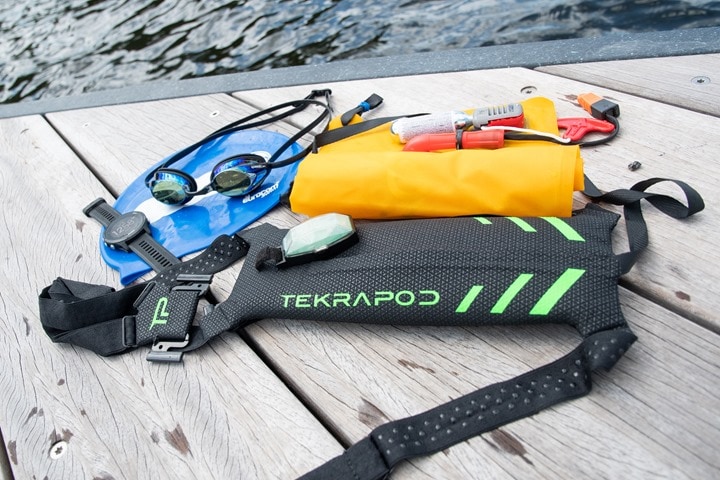
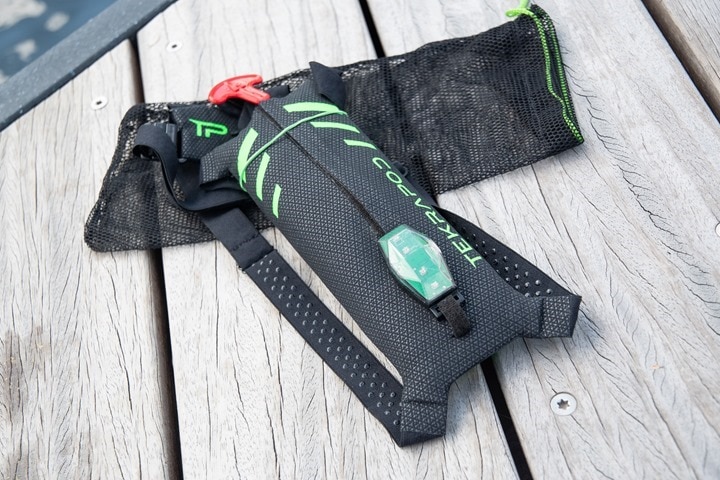
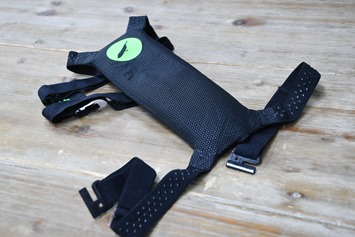
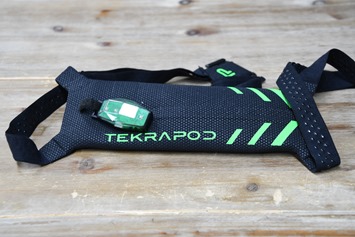
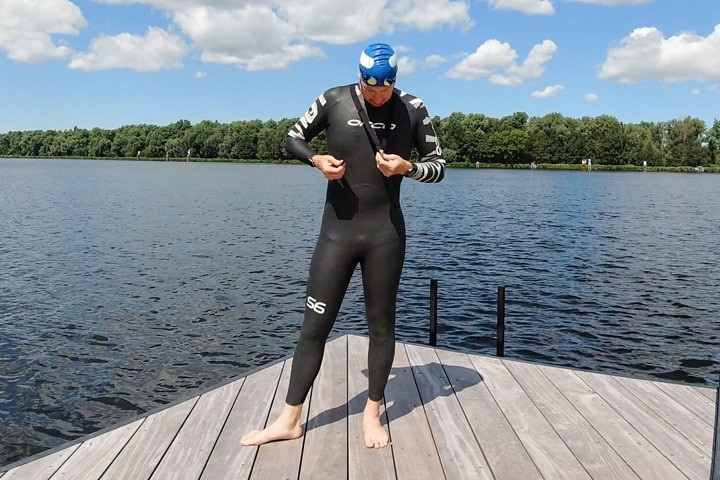

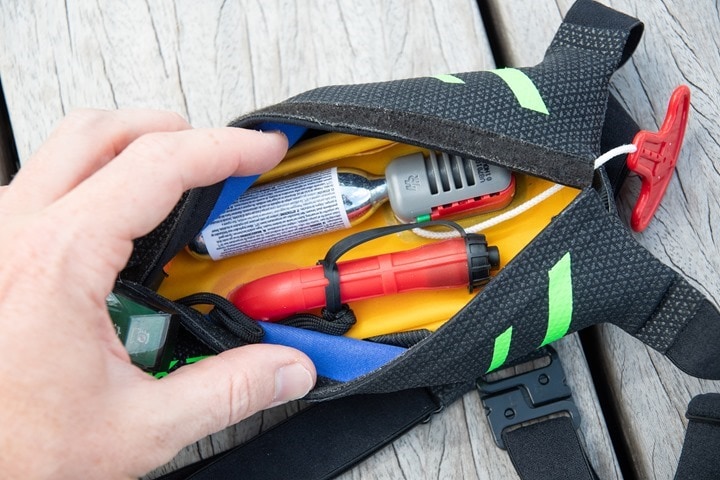
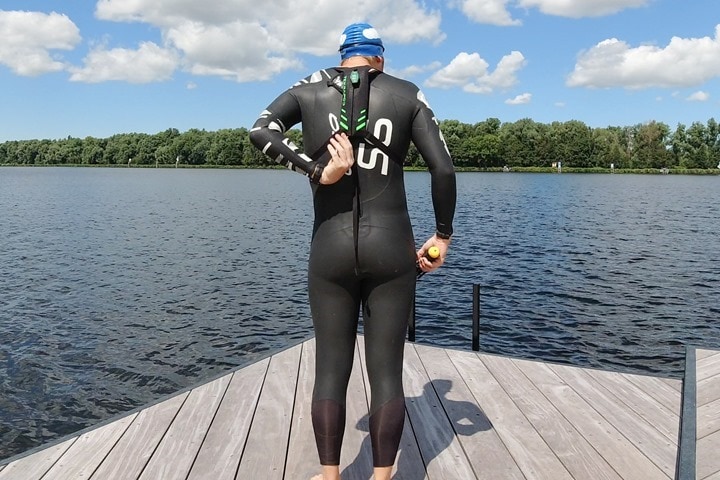
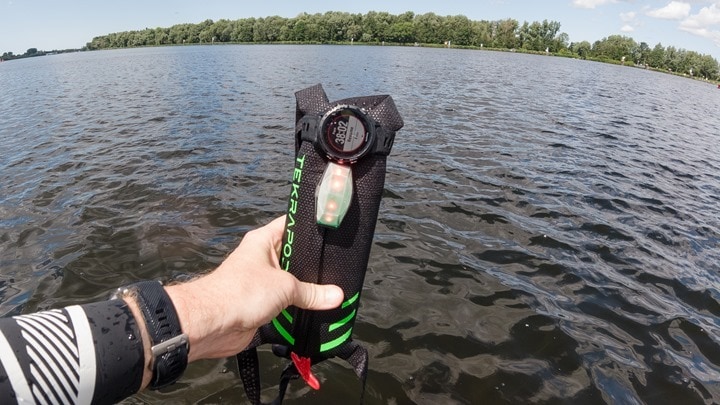

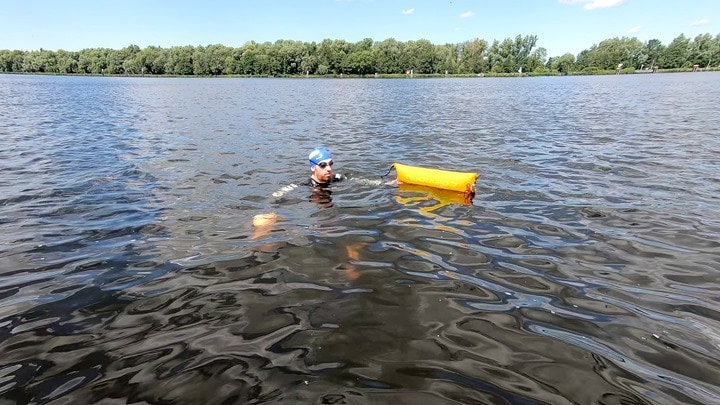

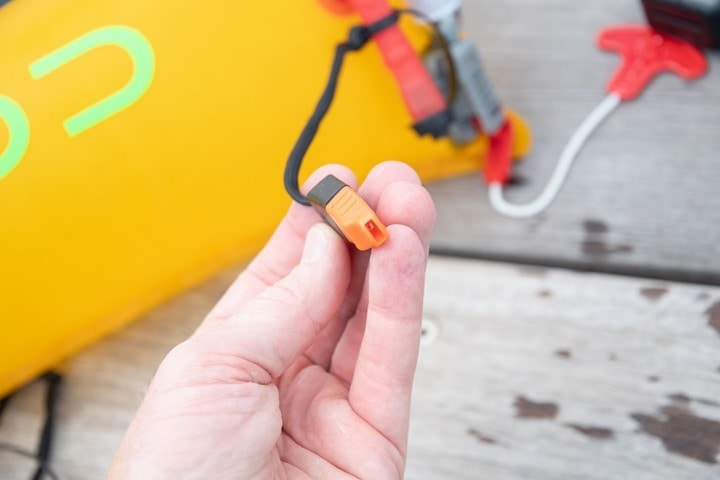
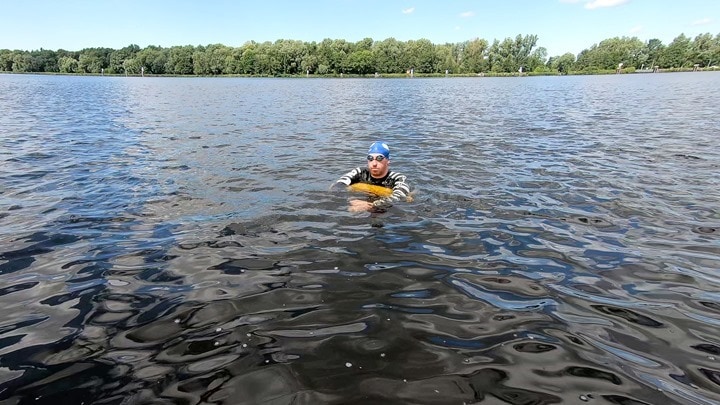
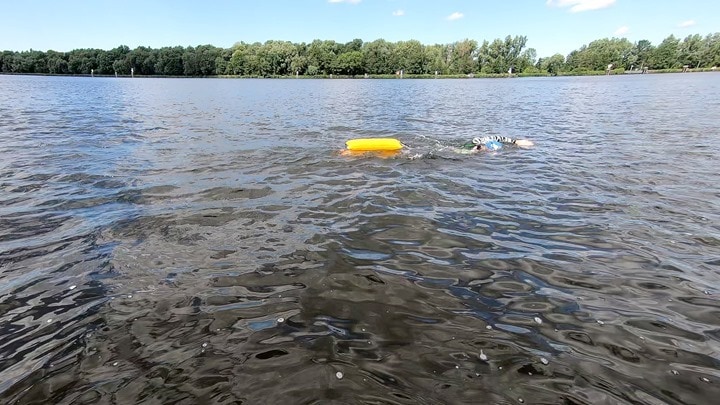
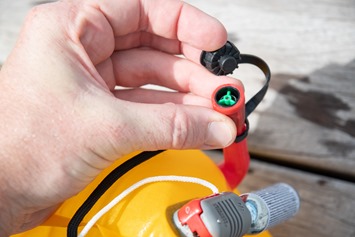
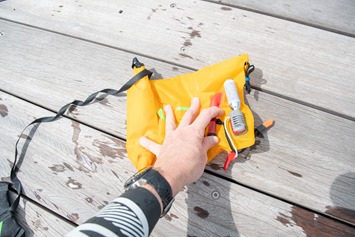
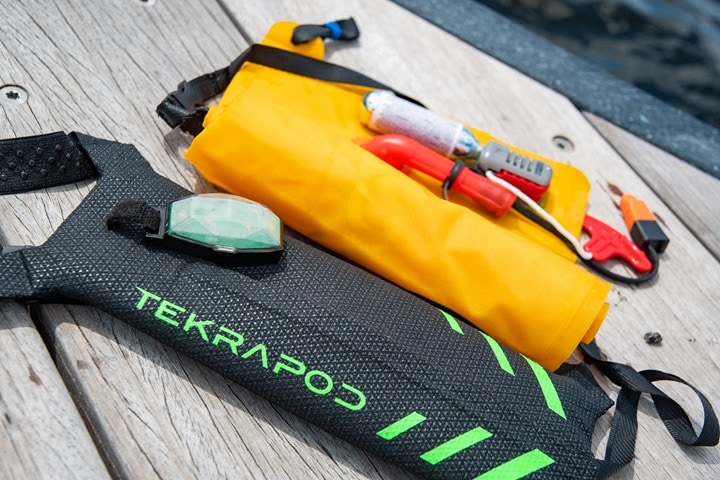
















“All you do is grab the red handle at the bottom and pull it out”
Do you mean…”all you do it remove the expensive GPS watch from around the pack and then pull the handle”? I assume it would easily ping a watch off if you just grab the handle and pull as per the video :)
Nope!
Where I positioned the GPS watch is attached to the upper portion, and there’s no velcro there (above the light, which also isn’t impacted). It’s the lower portion that opens up.
Thanks that’s good to know as I’d imaging a lot of people will do that with a watch :)
How hard is it to pull? My concern would be during a race (I’m assuming this is USAT legal from the description) someone could accidentally pull the handle and then your day is done. Also how quickly can you take it on and off? My T1 times are already bad enough 8D
Good question. It’s firm to pull, but not super hard.
I wouldn’t say that ‘It could never happen’ in terms of a triathlon, but I think it’d be a super-unlucky sort of scenario. On the bright side, you can deflate it quickly, and also disconnect it.
Oh, and for T1, it’s honestly just as easy as taking off your swimcap/goggles.
I mean…my T1 times wouldn’t make anyone think I have an easy time removing those things 8D
That’s interesting about the detachment/deflation bit. I’m not super worried, generally, about my swim but the swim is the most dangerous part of the sport.
I’ve been casually looking for a CO2 life “vest” explicitly because the cartridges are the same as the bike ones. For domestic air travel is the United States, they allow you to travel with CO2 if it is for a life vest.
link to tsa.gov
Yup, in fact I even traveled with it in the cabin of an airplane twice last week. :)
I have been using a swim buoy the past two years identical to your regular one.
With this Tekrapod device can I put stuff inside the yellow part to keep it dry?
No dry storage here. Everything gets wet.
Nitpicking… with value you mean valve, i guess?
Ray – i’m not an open water swimmer but the biggest shock to me is seeing all the plastic cr@p on the beach 9 YEARS AGO
How much worse it it now i shudder to think
There’s a similar product called “Restube” available here in Germany, starting at 50 Euro…
Nice product.
I think some improvements could be made regarding the visibility. If the aim is to be seen then why not make the whole lot out of fluorescent orange or pink? These colors can be seen from a much greater distance than the black and yellow that it is now. And adding some stick-on high reflective tape here and there would substantially improve visibility at night (in case the strobe light malfunctions or dies).
Like mentioned above I would also be a bit worried about other swimmers (intentionalyl or accidentally) activating the device. Moving the red handle to the top side (i.e. in the neck) might be a good idea. It is possibly also easier to reach there.
Neoprene is not buoyancy neutral, it floats! There’s a reason the rubberized tech suits were ultimately banned by FINA for pool swimming, they provided buoyancy. A wetsuit gives a solid 5 to 7 second advantage per 100 meters over swimmers who don’t wear them, because of the added buoyancy.
My thoughts as well, that’s the reason there are limits on the thickness of wetsuits for triathlon (5mm I believe, at least by one regulation in my brief Google-fu). Although as you go up in thickness and gain buoyancy, you do lose suit flexibility (and typically increase compression, making it harder to breath, etc) so realistically it’d be unlikely someone would want a thicker suit much beyond that point anyhow.
I’m wondering if by neutral buoyancy, it’s actually referring to the entire package (the weight of the contents otherwise cancelling out the buoyancy of the neoprene).
In other words, if you push the whole pack 1ft under water for example (not deployed obviously) and it doesn’t float back up, does that then meet the requirements of competition (and the fact that it’s sitting on the back, means realistically, it’s not adding buoyancy since during any decent stroke, that area is not significantly in the water, so it’s actually just adding weight and maybe a tiny bit of flow drag of water skimming the back, to the swimmer (basically pushing them down), until/unless they submerge the pack significantly while swimming (backstroke swimming, could be a concern if it’s not a neutrally buoyant package).
Those questions are beyond my knowledge or expertise, but if it’s already been allowed in sanctioned competition, then one assumes it’s not providing any advantage as designed.
I don’t really understand these products. If you need a buoy for comfort, just drag one. If you need a buoy for comfort in a race, you probably shouldn’t be doing the race. Either way, a buoy is not going to save your life if you have a heart attack, and unlike a dragged buoy, this won’t even mark your body for easy retrieval, since your unlikely to be able to deploy it while you’re having a heart attack.
Now maybe if it had sensors that could detect a heart attack and deploy automatically in a way that lifted your face out of the water.
It’s not all about heart attacks though, it could be anything else that’s requiring a user to alert nearby folks (perhaps a support boat).
Lol
I’m not honestly sure about the LoL. If the assumption is that the only issues people have during swims are cardiac events where all hope is lost anyway, then it sounds like swim/tri events can just save a lot of hassle and not have any support boats/etc on the water at all. If someone needs assistance, shrug. Which is basically what you’re saying.
Hi John Hanley here from Tekrapod, Just to say thanks to DC for doing the review and to all you guys for taking the time to comment. Tekrapod is not trying to compete or replace tow buoys. Tekrapod is an active safety device designed to actively address open water safety situations as they occur. If you find yourself facing a lot of unexpected water traffic, simple activate the internal bladder, it will act just as a tow buoy does (if not better). If you know in advance that there will be a lot of water traffic, I suggest you don’t go there, no safety device will prevent boat strike. If you are swimming with your buddies, activating the internal bladder send a clear signal that there is a problem. The 3ft Long bright yellow bladder can be waved, elevating your presence in the water and leaves on-lookers in no doubt that there is a problem. One incredible statistic that gets over looked is that 25% of all swimming related deaths relate to the person trying to save another from drowning. Tekrapod is the only device that allows you to help another swimmer without endangering yourself. I know which device I want my kids to use when swimming for this reason alone. So Tekrapod, isn’t a passive device, it an active one that is only used as the various situations occur, it doesn’t impede your swimming and can do everything a tow buoy can do and a lot more! But please whatever you decide, use a tow buoy, use a Tekrapod, but use something and always plan your swim, tell someone where you are going, never swim alone and never ever swim where there are lots of fast moving water users, no safety device will truly stop you from being struck. Swim Safely Guys and good luck with whatever you decide to do!! oh p.s. Tekrapod is race legal and Neutrally buoyant, no lift or propulsion… I Promise :)